Human skin is a very important organ. Its main function is protection against adverse factors such as toxins, microbes, bacteria, and viruses. But it performs this function well only when it is healthy.
The skin on the human body has varying degrees of sensitivity. On the legs, especially below the knee, the skin is exposed to various environmental influences. Therefore, itching, flaking, and dryness most often appear in these places. There are many reasons why the skin on your feet dries out. Let's look at the main ones, and also talk about what to do if problems start with the skin on your legs.
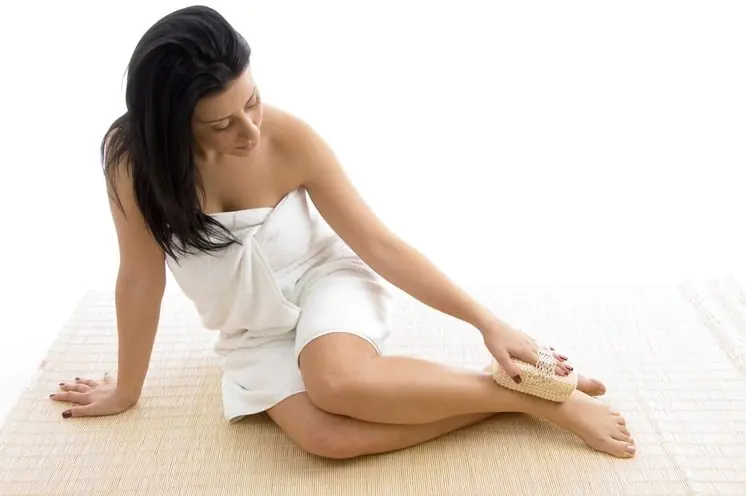
Why is this happening
The causes that cause unpleasant symptoms on the legs can be divided into two groups: external and internal. In most cases, this is a negative environmental impact that can easily be eliminated and return the skin of the feet to its normal condition.
However, there is a possibility that the reasons why the skin below the knees dries out may be infections or diseases of the internal organs, as well as skin ailments (dermatitis, fungus, psoriasis). In these cases, you will need the help of a doctor.
External reasons
It is impossible to take into account all the factors that affect the legs. There are a lot of them. Here are the main ones:
- Very dry indoor air.
- Washing your feet with chlorinated water.
- Allergies to skin care products. They do not have to be of poor quality for unpleasant symptoms to appear. Expensive cosmetics can also contain components that are not suitable for a particular person.
- Poor nutrition, lack of vitamins and microelements.
- Frequent hair removal.
- Cloth. Too tight, constricting tights or trousers compress blood vessels, slowing down blood flow. As a result, the nutrition of the skin deteriorates. Synthetic clothing also negatively affects the skin, as it interferes with normal moisture and air exchange.
- Winter shoes (especially high boots) can also cause this. You cannot wear it for a long time, as your feet will overheat in it.
- Washing your feet with too hot water.
- Long sunbathing, solarium.
- Exposure to extremely low temperatures (for example, in winter, if a person does not wear clothing appropriate to weather conditions).
All of the above reasons are easy to eliminate. But if after this there is no improvement, you should contact a dermatologist. Perhaps dry skin on the legs is a manifestation of the disease.
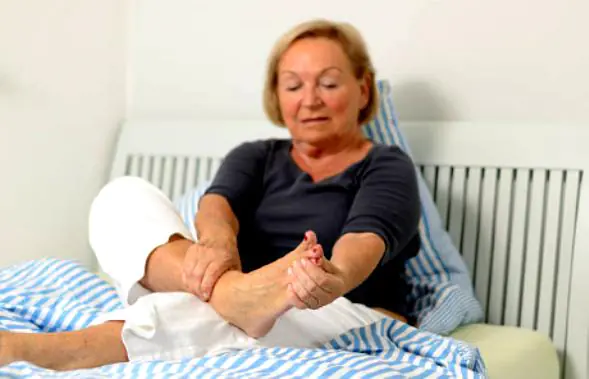
Age-related changes
As people age, irreversible changes occur in their skin. The amount of hormones that keep her in good shape decreases sharply. The structure of collagen fibers, the main building element, changes. The dermis becomes thin and dehydrated, which leads to dryness and flaking of the skin. The skin of the legs below the knees gets especially dry.
To normalize lipid and fat metabolism in tissues, it is recommended to consume more pure water. It is worth including foods high in collagen in your diet. Treat the skin of your feet with moisturizers.
Diseases
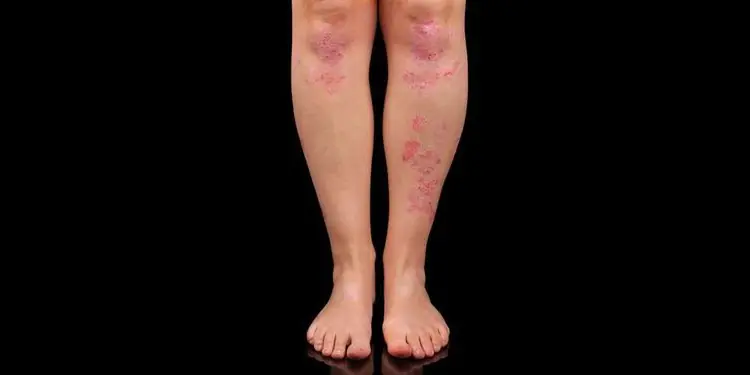
The reasons why the skin on the legs cracks and dries out may be general or local health problems:
- Eczema.
- Dermatitis.
- Psoriasis.
- Renal dysfunction.
- Liver diseases.
- Diabetes.
Of course, in this case, only medicine can solve the problem of dryness.
Infections
There are always microtraumas on the skin that are invisible and do not cause discomfort. But this is an open gate for infection, in particular for pathogenic fungi. You can become infected with them in any public place, and you do not have to come into contact with the carrier.
In this case, unpleasant sensations appear not only on the lower leg, but also on the foot. The area between the toes is especially susceptible to fungal diseases, as it is warm and humid there. With fungal diseases, the skin on the legs peels off. This is most often observed on the feet and between the toes.
Only a doctor can help here. Tests will need to be taken to detect infection. Based on these, treatment will be prescribed.
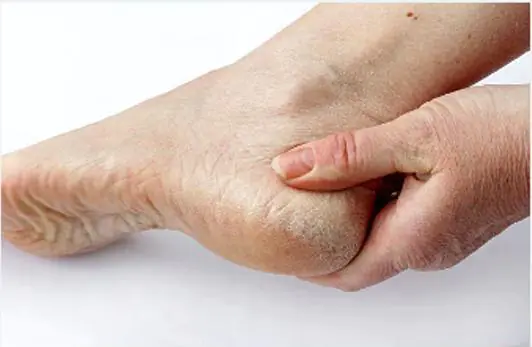
Poor nutrition
Everyone knows that healthy food is the basis of health. However, many people neglect this rule. What should be in a person's diet? Fruits and vegetables, vegetable oils, eggs, fish, seafood.
With a balanced diet, the body receives a sufficient amount of vitamins and nutrients. Their lack leads to problems. Thus, the skin on the legs becomes dry, itchy, flaky, and may crack.
Also at risk are tea, coffee and alcohol drinkers.
How to deal with unpleasant symptoms
Treating dry feet at home is very easy. You just need to be patient.
Improvised means. If the skin on your feet is dry, you definitely need to moisturize it regularly. Any means that you have in the house are suitable for this. Cream for hands, feet or even face, vegetable oil or butter. If you have cosmetic oil, even better. The product should be applied to problem areas, allowed to absorb a little, and the residue should be removed with a napkin.
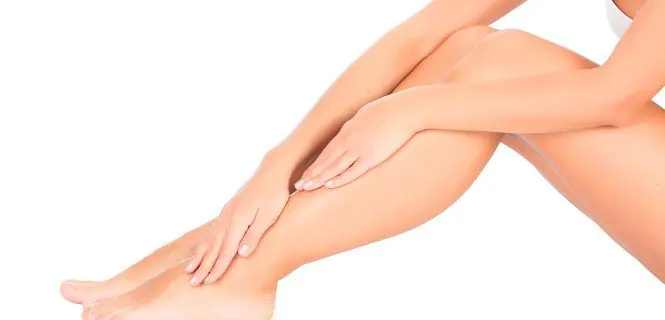
In order not to use improvised means, you need to purchase a special cream or lotion that will nourish and moisturize the skin.
Medicines. These include vitamin complexes, dietary supplements and creams sold in pharmacies. You can consult your pharmacist about purchasing these medications.
More serious medications should be prescribed by a doctor. These are hormonal agents, antifungal or antibacterial drugs.
Baths. They will help if dryness occurs on the feet. You need to take a tablespoon of medicinal herbs (chamomile, calendula, sage or oak bark) and brew a glass of boiling water. Insist. When cool, strain and pour into a container. Add the required amount of water. It shouldn't be very hot.
If you are very worried about itching on your legs, you can take a bath with the same herbs.
Wrap. If you have time and desire, you can pamper your feet. Suitable for this procedure: honey or cosmetic oil. Lubricate the feet generously with the product and wrap with cling film. Then take a comfortable position sitting or lying down and wrap your legs. Leave for at least half an hour. Then wash everything off.
Depilation
In many cases, this is the reason why the skin on the legs dries out. What are the dangers of commercially available products:
- Wax strips are a fairly aggressive method of removing unwanted hair. By tearing them out by the roots, we cause great harm to the skin. Firstly, while healing, the wounds formed during such depilation can be very itchy. Secondly, it is an open gate for infection. Thirdly, the top layer of skin is “torn off” with the hairs.
- Depilatory cream is an equally traumatic method. When applied to the skin, it dissolves hairs, which are then removed with a scraper. If women have delicate skin on their legs, irritation, dryness, itching and flaking cannot be avoided.
- Epilator. This is a more gentle method, but it can also cause redness and peeling.
- The gentlest method is a razor. But its noticeable disadvantage is the fragility of the smooth legs. After all, the hairs begin to grow again immediately. At the same time, they become coarser and darker.
When self-medication is unacceptable
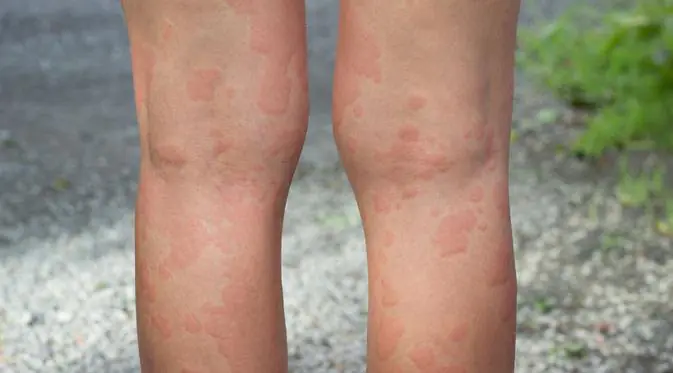
If the itching and dry skin of your feet does not go away despite all your efforts, you may need medical attention. This is especially important if the situation worsens - cracks appear from which ichor, bleeding ulcers, and pustules can be released. In these cases, you should immediately consult a doctor. He will prescribe the necessary studies to find out the cause of problems with the skin of the legs and prescribe a course of therapy.
The best creams for skin care of legs and feet
There are quite a lot of such products, both imported and domestic:
- "Zorka" Floralizin cream. The product was developed for use in private farming. They lubricated the udders of cows with it. But the natural composition and effectiveness in the fight against dryness and flaking were also enjoyed by beauties. The product contains chamomile extract, glycerin, vitamins A and E.
- "Radevit". Broad spectrum ointment. Relieves itching and inflammation, accelerates regeneration. It contains a loading dose of vitamin A, which determines its effectiveness. But this drug is prohibited for use during pregnancy.
- "Bepanten Derma". Designed specifically to soften and protect against excessive keratinization of the skin. It has a more natural composition. This cream for dry skin of the feet contains provitamin B5 (decpanthenol), allantoin, vitamin E, physiological lipids. The cream helps restore skin naturally. Penetrating into the deep layers of the dermis, it nourishes and moisturizes the skin.
- Kenyan Body Butter. Cream for moisturizing the skin of the legs and body from Ecolab. It is based on 97% natural ingredients - oils and extracts. The product does its job perfectly: moisturizes, nourishes and restores the skin. It is quickly absorbed and leaves virtually no sticky film. The only drawback this product has is the small volume of the jar.
- "D-panthenol." The active ingredient is dexpanthenol. The product has a powerful regenerating ability. This is a cheaper analogue of Bepanthen Derma cream.
Foot care rules
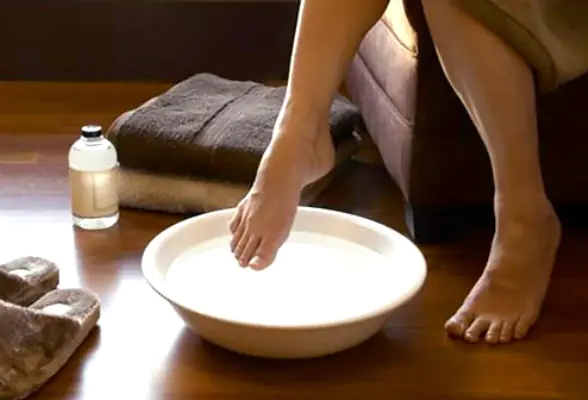
How should you take care of your feet to avoid skin problems? The rules of care are quite simple:
- Be sure to wash your feet daily. After this, wipe them dry with a towel.
- Every evening, moisturize your skin with milk, lotion or cream.
- Washing products should be chosen that are more gentle, with a neutral pH. Antibacterial soap is very drying, so it's best to save it for emergencies.
- A contrast shower will help relieve fatigue. The water should move from warm to cool.
- Exfoliate weekly to get rid of dead particles. If the skin on your legs peels off, the scrub should be delicate, and the procedure should be done more often.
Preventive measures
If the skin on your feet is dry, you need to start treating it. To prevent this phenomenon from occurring, you can regularly perform a number of simple measures:
- Drink enough water.
- In an apartment where the air is very dry, it is necessary to humidify it. This is especially true during the heating season.
- Use proven skin care products.
- Choose clothes from natural fabrics.
- Do not stay indoors for a long time wearing warm shoes.
- Wear your own slippers in the public bathhouse or sauna, as well as on the beach.
- Try to sit less and move more. If it is impossible to avoid sitting for a long time, do a warm-up every 20 minutes or just walk around. This is useful not only for the skin, but also for the general tone of the body.
- Normalize your diet. Food should be varied. You need to eat more vegetables and fruits, eliminate sweets and foods containing large amounts of caffeine.
When dry skin appears below the knees, it causes significant discomfort to a person. Of course, you can lubricate it with moisturizer and wait until the dryness goes away. But this can last for years, which is quite uncomfortable.
To finally get rid of the problem, you need to find out what causes peeling of the legs below the knee and eliminate them. If this is not done, the affected area may spread to other areas of the skin.
Causes of peeling
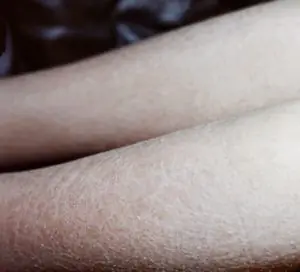
All the reasons that can cause dry skin on the legs are divided depending on the cause. Most of the factors are external influences that can be easily eliminated and then the skin of the legs will return to its normal state. But there is a small chance that the peeling is a sign of a serious internal disease that requires medical attention.
External factors
Peeling skin may be the first warning sign of serious internal diseases. But if it is localized in one area and itches, then most often it is the result of external influences. There are a large number of reasons that can affect the skin of the feet, and it is impossible to take them all into account. Therefore, it is necessary to know the main factors that affect the legs.
- Dry air due to heating or constant use of air conditioning.
- Allergic reaction to household chemicals.
- Allergy to cosmetics.
- Wearing clothes (underwear, pants, socks) that are small, which causes pressure on the blood vessels in the legs and uneven distribution of nutrients. This effect can also be caused by shapewear of the wrong size, or worn on the body for more than 5 hours.
- Dry skin due to excessive exposure to ultraviolet rays.
- Contact with skin of liquids with a high content of chlorine or other impurities that are used in tap water. This effect can be achieved both by home water treatments and by going to the pool.
- Infectious diseases affecting the skin.
- Wearing winter boots in a well-heated room.
Most of the external factors are easily removable, but if remission does not occur after taking preventive measures, you should consult a doctor. After all, this may be the first sign of the development of a serious disease. You should also do this if redness appears at the site of peeling, because this is most likely an infection.
Internal diseases
The causes of peeling legs below the knees may be a violation of the health of the body. Dry skin can occur either from local damage or from a general disease.
Common causes of dry skin:
- diabetes;
- disturbances in liver function;
- kidney dysfunction;
- erythroderma;
- psoriasis;
- eczema.
Internal causes also include a sedentary lifestyle. Because of this, veins and blood vessels are compressed, which leads to the supply of fewer nutrients necessary for the skin. This makes itself felt even if a person plays sports after a long day of work at the computer.
If the skin of the legs below the knees dries out due to an internal disease, then it is impossible to cure it on your own. Only a qualified doctor can accurately determine the cause and create the most appropriate course of treatment.
Therefore, before trying home methods, you should undergo a medical examination that will identify the source. And after treatment, you can use preventive measures and home methods for healing your skin.
Preventive measures

When the skin on a woman's legs peels below the knees, it is easier to cure the disease once, and then constantly maintain the condition of the skin. This is much easier to do than having medical procedures done every six months.
- It is very important to humidify the air in the apartment, especially during the heating season.
- You should avoid antibacterial soaps or those that contain many additional substances (dyes, fragrances).
- Use only proven high-quality cosmetics that do not contain toxic additives.
- Exfoliate the skin every week to get rid of dead particles from the feet.
- Moisturize your legs and feet with coconut oil or body milk.
- Reduce the amount of synthetic clothing adjacent to the affected area.
- Remove boots or other warm footwear indoors.
- When working sedentarily, alternate periods of immobility with walking. The most useful thing is to get up and walk every 20 minutes. This will have a beneficial effect not only on the skin, but also on work productivity.
Home care methods

External effects will be ineffective if the lack of nutrients that are necessary for the skin is not eliminated. Therefore, you should reconsider your diet. It is advisable to increase the amount of stewed fish and fresh salads seasoned with vegetable oil.
It is also important to eat grains rich in fiber. Doctors recommend starting courses of vitamin supplements in late autumn and early winter. This is necessary in order to support the body, which suffers from a lack of fresh greens, fruits or vegetables.
If the reason is insufficient subcutaneous blood circulation, then you can strengthen it with the help of foot baths. For this, procedures not only with warm water are suitable, but also quick dipping into containers of different temperatures.
If the skin of your feet is steamed, you can add a decoction of herbs that will help reduce peeling. Oak bark, chamomile, sage or St. John's wort are good options. It is advisable to alternate them throughout the course.
If the skin is insufficiently nourished, you can deliver beneficial substances using a foot mask. To do this, you need to purchase vitamins A and E at the pharmacy, which are sold in ampoules. You will also need 100 g of thick sour cream and 40-50 g of coconut oil.
Sour cream and butter are thoroughly mixed, then 1 bottle of medicine is added and the mixture is applied to the feet. The entire smeared surface is wrapped in cling film for 20 minutes so that the vitamins do not oxidize in the air. After completion, simply rinse off the substance with warm water.
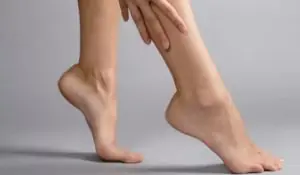
Cleansing with paraffin. Depending on the affected area, you will need 2-3 thick suppositories. They are lit and gently dripped onto flaky skin so that the drop does not burn. When the piece hardens, cover the area nearby. Do not bring the candle very close to the skin, otherwise you may get burned. And after the entire affected area has disappeared, the procedure is repeated 1-2 more times. After this, the leg is wrapped in cling film, and after 1 hour it is thoroughly cleaned with fine pumice. The course consists of 5-10 procedures. When carrying out the last 4-5 wrapping procedures, it is advisable to use beeswax candles.
It is important to remember that this procedure can only be carried out if there are no scratches, otherwise the hot mass will corrode the wound.
Finding the cause of dryness and eliminating it is the best way to cure peeling feet. If you react early, you can avoid the cost of restoring the affected area. It is best to immediately consult a doctor who will help exclude serious diseases and skin infections from the group of causes.
If a person notices that the skin on the lower extremities has begun to peel and look dry and unhealthy, then they definitely need proper care. However, before starting any action, it is recommended to go for a consultation with a doctor, who will make a preliminary diagnosis and, if necessary, prescribe additional examination.
After all, it also happens that such symptoms are not only cosmetic in nature, but also signal serious disorders in the body. Human skin is a kind of protective barrier, thanks to which the body remains healthy. This becomes possible due to the fact that the skin does not allow many unfavorable factors to enter: toxins, bacteria, etc.
Initially, you need to figure out why the skin on your legs below the knees is peeling, and only then begin therapeutic or cosmetic measures to restore its normal appearance. Of course, first of all, dry skin of the lower extremities is unsightly, but this condition is often accompanied by unpleasant sensations: itching, pain, peeling, redness, burning, etc.
Causes
In total, doctors identify 5 groups of reasons why such changes occur:
- influence of external factors;
- age-related changes in the body;
- progression of chronic diseases;
- infectious lesion;
- poor nutrition.
Let's look at each point in more detail.
It’s worth saying right away that most of the factors that lead to peeling of the skin on the legs below the knees can be eliminated without much effort and specific treatment. Many people who have a fairly sensitive epidermis have peeling feet when exposed to aggressive wind, sun, cold, water and air. People with dry skin type suffer the most under such conditions.
The solution to the problem may be to use a rich cream when you go outside in frosty weather, but if it’s summer outside, then cosmetics with increased ultraviolet protection will come in handy (men should also not neglect these recommendations). If the air in the room is dry, then you need to install a humidifier or several containers of water. To humidify the air, you can wash the floors more often without wiping them dry.
If a person uses a foot cream that is not suitable for their skin type, peeling may also occur. Therefore, before buying any cosmetics, it is better to carefully read the recommendations and instructions of the manufacturer. When girls often exfoliate their legs, the function of their sebaceous glands is inhibited, so such products should be used only when absolutely necessary.
Peeling of the legs below the knees can be a symptom of the body's reaction to a food irritant. Simply put, a person has an allergy. In this case, peeling is accompanied by itching. Provocateurs can be artificial and natural materials from which clothes and shoes are made, as well as dust, animal hair, household chemicals and much more. To solve the problem, you need to limit contact with the irritant, or completely eliminate it, and also consult with your doctor about which antihistamines are best to take.
The cause of peeling legs may be insufficient fluid intake, that is, dehydration. To prevent this, you need to drink at least one and a half liters of clean water per day. If you do not heed this recommendation, gradually, starting from the shin area, the peeling will reach the thigh, and even then the process will become irreversible, and it will be impossible to cope with it.
In addition to a small amount of fluid, legs in this condition can be due to the abuse of anti-cellulite products, violation of the rules of visiting the sauna, etc.
External reasons
Your feet, or rather the skin, will not start to become dry and flaky just like that. There are many external factors that provoke the development of this condition, but their complex impact is considered the most dangerous.
Reasons of this type include:
- Excessively dry air in the living room during the heating season.
- Incorrect wearing of underwear for weight loss, stockings and socks made of synthetic materials, and especially if they still have a tightening effect, which contributes to squeezing blood vessels, poor circulation and improper nutrition of cells.
- Aggressive exposure to ultraviolet radiation, including regular visits to the solarium.
- Swimming in water with a high chlorine content (swimming pools).
- Lack of water purification filters at home.
In most cases, eliminating external negative factors is not difficult.
Age
Unfortunately, no person can influence the natural processes of the body and stop aging. After 50 years, and for some people even earlier, changes in the structure of the skin begin to occur: they become thinner, lose moisture, which leads to peeling of the legs and other areas. This condition is caused by changes in collagen fibers, which are the main building element of the epidermis.
To solve the problem, it is recommended to eat more foods that contain collagen, and also not to neglect drinking clean water, which will help normalize lipid and fat metabolism in tissues.
Infections
Peeling of the skin of the legs can occur due to the penetration of pathogenic infections and microorganisms into the epidermis. One of the most common causes is a fungal infection, which can be “caught” in any public place through contact with a carrier of the infection. In addition to dryness and flaking, the feet are very itchy, especially between the toes, involving the foot and lower leg.
For such a disease, therapy is prescribed only by a doctor, but the patient is first advised to undergo an examination with tests that will help determine the type of fungal infection.
In addition to fungus, dryness and flaking of the lower extremities can be a symptom of eczema, dermatitis, psoriasis or Kawasaki disease. Therapy should also be prescribed by a qualified dermatologist and after laboratory diagnosis.
In addition to skin diseases, itching, dryness, redness and peeling of the legs occur in the presence of concomitant pathologies, including:
Speaking about medications, it is worth noting that if a person takes a lot of hormonal drugs, then the legs can also peel very much below the knees. Similar conditions are observed with short-term or long-term use of ointments with hormones, which lead to dysfunction of the stratum corneum of the epidermis.
Nutrition
Feet can become cracked in people who neglect a balanced diet. The diet of a healthy person should always contain large quantities of fresh vegetables and fruits, vegetable oils, fish and seafood.
But if vitamin deficiency is observed in the body, then peeling of the skin below the knees cannot be avoided. Excessive consumption of drinks containing caffeine (black tea and coffee) and alcohol can also lead to a similar change in the epidermis of the leg.
Prevention
If you don’t want your feet to start cracking, peeling, or itching, then it is recommended to follow standard prevention rules. If a person visits a swimming pool, sauna, wears someone else’s slippers, or buys shoes to try on in a store, then it is recommended that he always put on disposable socks first. This way you can avoid direct contact with pathogenic bacteria, because your foot will be protected. You still can’t use the same personal hygiene items, as the fungus is transmitted very quickly.
As for the condition of the body, first of all it is necessary to promptly treat all skin diseases. You definitely need to fill your diet with healthy foods and give up fast food.
If a person is allergic, then he should take care to reduce contact with the irritant. During autumn, winter and spring, when there is a serious lack of nutrients, you need to take vitamin complexes. And always remember that low fluid intake will lead to dehydration, which in turn causes dry and flaky skin on your feet.
Girls should carefully approach the choice of cosmetics; do not neglect the suitability of skin type and recommendations for creams. If possible, it is necessary to find a replacement for peeling if peeling of the skin of the legs below the knees is observed after it.



